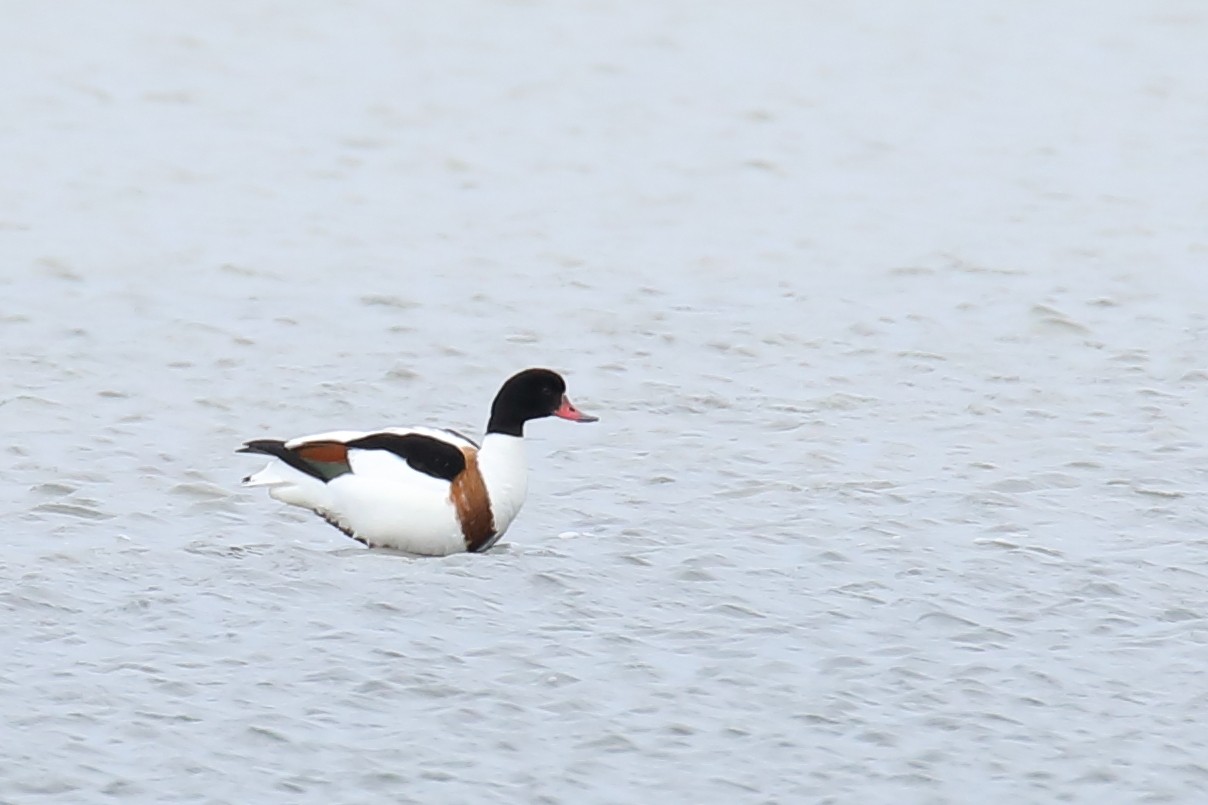Common Shelduck
A species of Typical Shelducks Scientific name : Tadorna tadorna Genus : Typical Shelducks
Common Shelduck, A species of Typical Shelducks
Botanical name: Tadorna tadorna
Genus: Typical Shelducks
Content
Description People often ask General Info
Description
It is a striking bird, with a reddish-pink bill, pink feet, a white body with chestnut patches and a black belly, and a dark green head and neck. The wing coverts are white, the primary remiges black, and the secondaries green (only showing in flight) and chestnut. Sexes are similar, but the female is smaller, with some white facial markings, while the male is particularly crisply coloured in the breeding season, his bill bright red and bearing a prominent knob at the forehead. 
Size
67 cm
Life Expectancy
16 years
Nest Placement
Burrow
Feeding Habits
Common Shelduck primarily consumes invertebrates, including insects, molluscs, and crustaceans. It employs foraging methods like dabbling and mudflat sifting to find food, and exhibits specific adaptations such as a specialized bill to sieve small prey from the substrate.
Habitat
The common Shelduck is typically found in coastal regions, residing in habitats such as mudflats, estuaries, and salt marshes that feature salt or brackish water. These regions are characteristic of broad geographical areas such as Europe and Asia. The species shows a preference for burrow nesting, often appropriating disused rabbit burrows. They also inhabit riverine environments, wetlands, and lakes within semi-desert and steppe biomes. The common Shelduck has been observed at elevations up to 2400 meters in some Asian regions, showcasing its habitat flexibility.
Dite type
Omnivorous
People often ask
General Info
Feeding Habits
Bird food type
Behavior
Moulting flocks can be very large (100,000 on the Wadden Sea), since most pairs leave their partially grown young in a crèche with just one or two adults. This species is mainly associated with lakes and rivers in open country, breeding in rabbit burrows, tree holes, haystacks or similar. In winter it is common on suitable estuaries and tidal mudflats as well. The young will dive under water to avoid predators and the adults will fly away from them to act as a decoy. 
Distribution Area
This is a bird which breeds in temperate Eurosiberia. Most populations migrate to subtropical areas in winter, but this species is largely resident in westernmost Europe, apart from movements to favoured moulting grounds, such as the Wadden Sea on the north German coast. The common shelduck is common around the coastline of Great Britain and Ireland (where it is simply known as shelduck), where it frequents salt marshes and estuaries. 
Species Status
Not globally threatened.
Scientific Classification
Phylum
Chordates Class
Birds Order
Waterfowl Family
Geese Genus
Typical Shelducks Species
Common Shelduck 